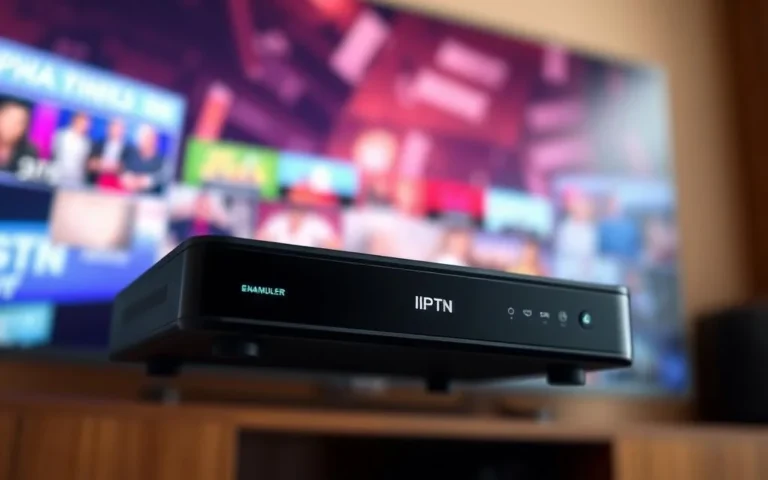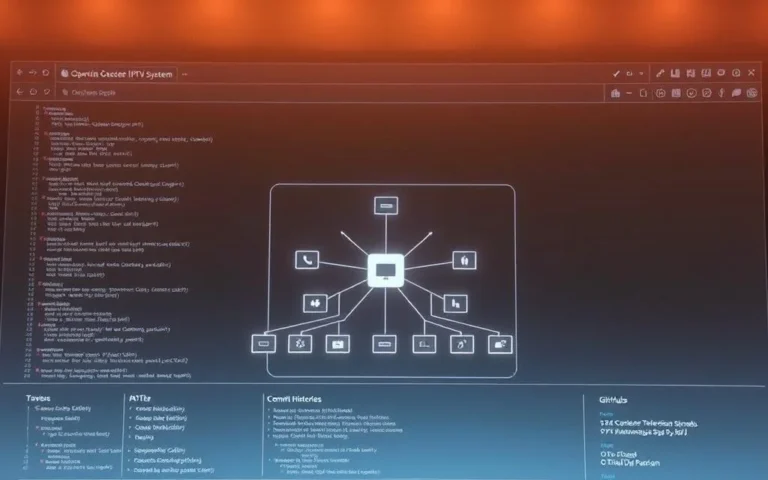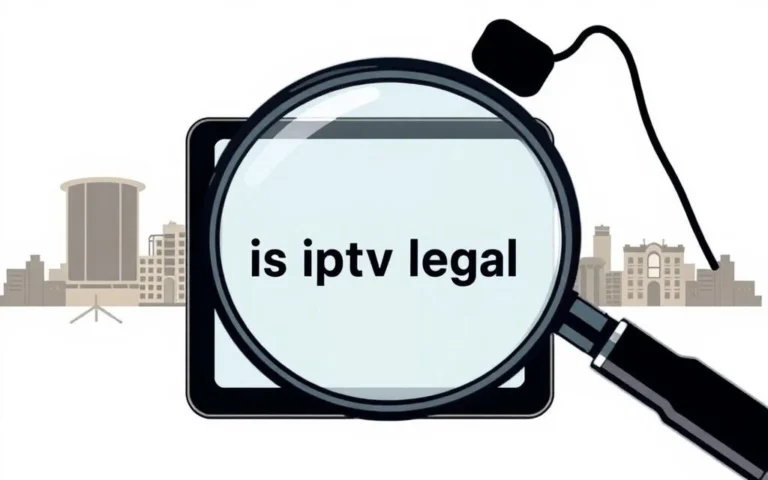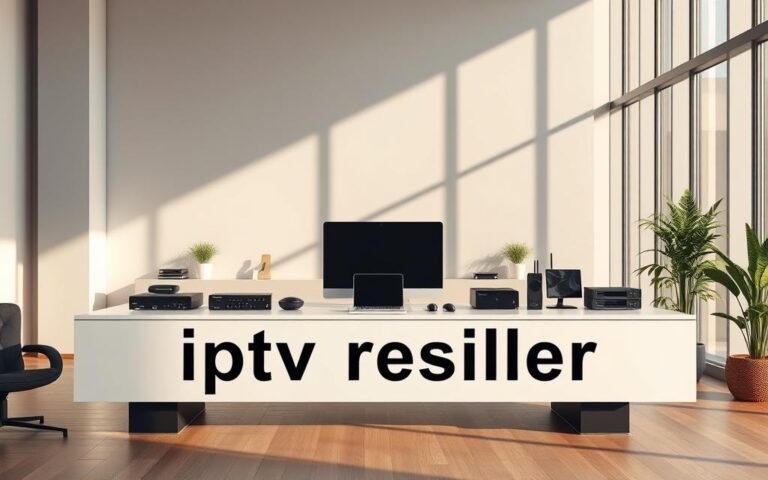what is iptv?
Have you ever imagined a world where your television doesn’t need a cable box or a satellite dish? A world where your favorite shows, movies, and live events stream directly to any screen you choose, on your own schedule — that’s exactly what IPTV (Internet Protocol Television) offers. So, what is IPTV and how does it transform the way we watch TV?
This is the reality delivered by a powerful new technology. It’s reshaping the entire entertainment landscape, giving you unprecedented control over your viewing experience. This guide will walk you through every aspect of this modern approach to television.
You will discover how it uses your internet connection to deliver content directly to your devices. This method offers a level of flexibility that traditional cable and satellite systems simply cannot match. Millions of viewers are already making the switch.
By the end of this guide, you’ll have a complete understanding of the technology, its benefits, and how it compares to other streaming services. You will be equipped to decide if it’s the right choice for your household.
Key Takeaways
- This technology delivers television content over the internet instead of traditional cables or satellites.
- It provides greater flexibility and control over what you watch and when you watch it.
- This guide offers a comprehensive look at how the technology works from the ground up.
- You’ll learn about the key advantages and potential limitations of this modern service.
- Understand how it stacks up against other popular streaming platforms available today.
- Gain the knowledge needed to make an informed decision about your home entertainment.
Introduction to IPTV Technology
Your television experience has evolved through multiple technological revolutions, each bringing new possibilities. This modern approach represents the latest chapter in broadcast history.
The Evolution of Television Delivery
You’ve witnessed television delivery transform from over-the-air signals to cable, then satellite dishes. Now internet-based streaming brings content directly to your devices.
This evolution marks a fundamental shift in how media companies deliver television. They’ve moved from one-way transmission to interactive, on-demand service models.
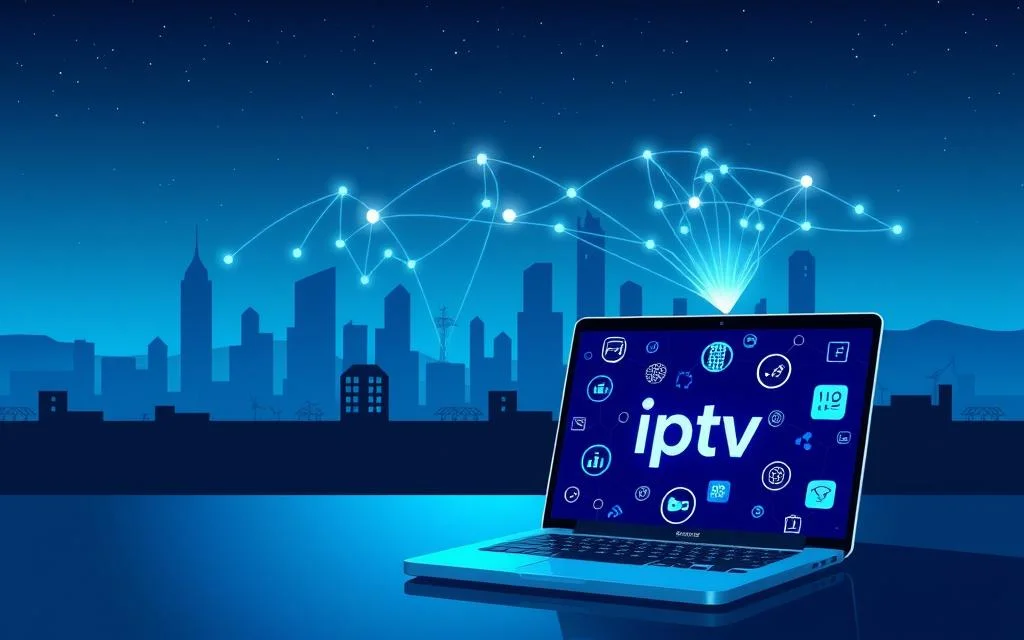
Why IPTV Matters in Today’s Digital World
This technology addresses the changing way you consume television. It offers flexibility to watch what you want, when you want, on your preferred device.
The global market for this service was valued at $68.84 billion in 2023. Projections show it reaching $200.22 billion by 2030, growing at 16.8% annually.
This growth demonstrates the massive shift toward internet-based television delivery. The technology bridges traditional broadcasting and modern streaming.
It offers the best of both worlds in a single service. You get scheduled programming plus on-demand options that suit your lifestyle.
What Is IPTV: Understanding the Fundamentals
At its core, this television delivery method operates on the same principles that power your internet browsing experience. Instead of traditional broadcast signals, it uses digital packets to bring entertainment directly to your screens.
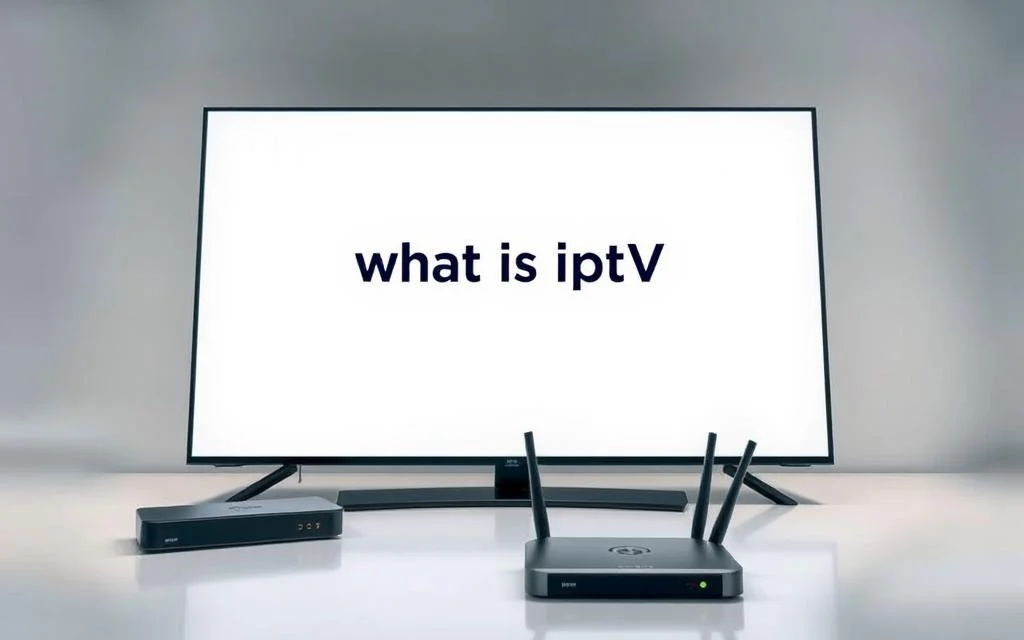
Defining IPTV and Its Core Components
Internet Protocol Television represents a system where digital television service reaches you through internet protocol technology. This approach transforms how you access video content.
The architecture includes several key elements. Content sources provide live channels and on-demand videos. Encoding systems compress this material into manageable data packets.
Distribution servers then route this information efficiently across networks. Streaming servers finally deliver the programming to your preferred devices. This entire process relies on internet protocol for smooth transmission.
Key Features That Differentiate IPTV
This service stands apart through its unique capabilities. You gain access to both scheduled programming and on-demand options within one platform.
Multiple device support allows your entire household to enjoy content simultaneously. Managed networks ensure consistent quality regardless of viewing demands.
Unlike traditional cable’s real-time broadcast model, this technology stores programming. You can request specific content whenever it fits your schedule. This flexibility represents the modern way to consume television.
How IPTV Works: Architecture and Delivery
The magic behind this television service lies in its sophisticated network design. Your viewing experience depends on a robust architecture that efficiently manages and delivers video content.
This system operates by transforming broadcasts into digital data packets. These packets travel across high-speed networks directly to your screen.
Centralized vs. Distributed IPTV Architectures
Service providers choose between two primary architectural models. Each offers distinct advantages for managing content and network traffic.
Centralized architecture stores all media on a single set of servers.
- Simpler to manage and maintain.
- Ideal for smaller Video on Demand deployments.
- Requires strong core and edge bandwidth.
Distributed architecture spreads servers across multiple locations.
- Offers superior bandwidth usage efficiency.
- Essential for managing large, scalable networks.
- Provides built-in system management features.
Data Packets, Streaming Protocols, and Network Role
When you select a program, your request travels to a video server. The server then breaks the content into small data packets for transmission.
These packets use streaming protocols to journey over fiber-optic networks. They arrive at your device almost instantly, reassembling into seamless video.
A managed network dedicates specific bandwidth for this traffic. This creates a private lane, ensuring consistent quality free from public internet congestion. Your experience relies heavily on your own network’s stability and available bandwidth.
Benefits and Limitations of IPTV
The shift to internet-based television delivers significant benefits while introducing new technical requirements. Your viewing experience transforms with this modern approach, but it demands specific conditions to work optimally.
Advantages: Flexibility, Quality, and On-Demand Viewing
You gain unprecedented control over your entertainment. With these services, you can pause, rewind, and fast-forward any content at your convenience. This flexibility transforms how you interact with television programming.
The quality of your viewing experience reaches new heights. Most streaming devices support HD and 4K video, delivering crystal-clear picture quality. You enjoy surround sound and high-bitrate content when your connection supports it.
Specialized channels and apps cater to diverse interests. This means more targeted content options that match your specific preferences. The service adapts to your lifestyle rather than forcing you to follow schedules.
Drawbacks: Bandwidth, Connectivity, and Lag Issues
Your internet connection becomes the most critical factor. Without sufficient bandwidth, the experience suffers significantly. Rural users often face challenges accessing reliable high-speed service.
Network issues can disrupt your streaming. Lag, buffering, and outages may occur due to various factors. Device incompatibility and bandwidth constraints can degrade video quality.
For optimal performance, you need specific internet speeds. Standard definition requires 3-5 Mbps, while HD content needs 10-15 Mbps. 4K streaming demands at least 25 Mbps for a smooth experience.
Comparing IPTV with Traditional TV and OTT Services
Your television options have expanded dramatically with internet-based viewing platforms. Understanding the differences helps you choose the best service for your household.
Each delivery method has unique advantages and limitations. Cable, satellite, and streaming services all offer distinct viewing experiences.
Traditional Broadcast: Cable, Satellite, and Their Constraints
Traditional television relies on either cable or satellite transmission. Cable providers like Time Warner Cable use coaxial connections to deliver content.
Satellite services such as DirecTV transmit programming via radio waves. Both systems operate on a real-time broadcast model.
This means you must watch shows when they air or use recording equipment. The transmit-and-forget approach limits your viewing flexibility significantly.
OTT Platforms and How IPTV Provides a Unique Experience
Over-the-top streaming services like Netflix and YouTube use the public internet. Your video stream competes with other data traffic during peak hours.
IPTV services operate on private, managed networks dedicated to video delivery. This ensures consistent quality without buffering issues.
These services combine live channel offerings with on-demand content. You get the structure of traditional television with modern streaming flexibility.
| Service Type | Delivery Method | Content Access | Network Type |
| Cable Television | Coaxial cable connection | Real-time broadcast only | Dedicated wired network |
| Satellite Television | Radio wave transmission | Scheduled programming | Wireless broadcast |
| OTT Streaming | Public internet | On-demand library | Shared public network |
| IPTV Services | Internet protocol | Live + on-demand | Private managed network |
Unlike cable satellite bundles with unwanted channels, IPTV providers offer tailored packages. Multiple household TVs can share one subscription, providing better value.
IPTV Service Models and Viewing Options
Modern television services offer several distinct viewing models that cater to different preferences. You can choose the approach that best fits your lifestyle and viewing habits.
Each model provides unique advantages for accessing your favorite programs. The flexibility allows you to control when and how you watch television content.
Live TV, Video on Demand, and Time-Shifted Media
Live television streaming brings real-time broadcasts directly to your devices. Services like YouTube TV and Hulu + Live TV let you watch events as they happen.
You can pause or rewind live programming, unlike traditional broadcast television. This gives you control over your viewing experience.
Video on Demand services provide instant access to movies and shows. Netflix and Disney+ offer vast libraries you can explore anytime.
Time-shifted media, often called catch-up TV, lets you watch missed broadcasts. BBC iPlayer typically keeps shows available for 30 days after airing.
NVOD and Specialized Channel Offerings
Near Video on Demand functions like an online movie theater with staggered start times. DirecTV uses this model to serve rural customers effectively.
NVOD can include advertising breaks, allowing providers to offer lower subscription fees. This benefits viewers while maintaining service profitability.
Specialized channel offerings cater to specific interests across various genres. You can access sports, news, entertainment, and niche programming within single platforms.
The variety of service models means you can mix and match options. Combine live events with on-demand content for a complete viewing experience.
Implementing IPTV: Devices, Internet Requirements, and Setup
The practical implementation of internet-based television revolves around three key elements that ensure smooth viewing. You need reliable internet connectivity, proper software or apps, and compatible display devices. These components work together to deliver your entertainment seamlessly.
Set-Top Boxes, Smart TVs, and App Options
Your viewing experience begins with choosing the right hardware. A set-top box receives and decodes digital packets into television signals. This device connects your screen to streaming content.
Many users prefer app-based solutions instead of dedicated boxes. Smart TVs with built-in apps eliminate the need for extra devices. Streaming sticks like Amazon Fire TV or Roku offer similar flexibility.
These apps manage your subscribed channels across multiple platforms. You can access the same service on smartphones, tablets, and computers. This multi-device support provides true viewing freedom.
Internet Connectivity, Bandwidth Needs, and Network Tips
Your internet connection quality directly impacts streaming performance. Different video resolutions require specific bandwidth levels. Higher quality content demands faster speeds.
Always exceed minimum requirements for buffer-free viewing. Other household devices consume bandwidth simultaneously. Fiber optic connections typically deliver the most reliable experience.
| Video Quality | Minimum Speed | Recommended Speed | Best Connection Type |
| Standard Definition | 3-5 Mbps | 7-10 Mbps | Broadband |
| High Definition | 10-15 Mbps | 20-25 Mbps | Cable/Fiber |
| 4K Ultra HD | 25 Mbps | 35-50 Mbps | Fiber Optic |
Choose legitimate providers with official app store presence. Reputable services offer secure payment options and clear policies. This ensures safe, high-quality television entertainment.
Conclusion: The Future of Television Is Here
We’ve reached a turning point in how entertainment reaches your screen. The television landscape transforms from mass broadcasting to personalized experiences. IPTV technology fuels this revolution, empowering niche channels for every interest.
This shift places control directly in your hands. You choose what to watch and when. The future integrates television with your digital life seamlessly.
Creators and businesses now launch their own streaming services. Accessible tools democratize content creation. Your viewing options expand exponentially.
As a viewer, you gain unprecedented choice. Evaluate providers carefully for quality and legitimacy. The right IPTV service transforms your entertainment experience completely.
This technology represents more than just a new way to watch. It reshapes who creates and distributes media content. The future of television has truly arrived.
FAQ
How does Internet Protocol Television differ from services like Netflix or Hulu?
Internet Protocol Television delivers live broadcasts and scheduled programming through a managed network, similar to traditional cable or satellite. Over-the-top (OTT) streaming services like Netflix provide on-demand video content directly over the public internet. Your experience with an IPTV service is often more integrated, offering a unified guide for live channels and video-on-demand libraries.
What kind of internet connection speed do I need for a reliable viewing experience?
For standard definition (SD) streams, a stable connection of at least 10 Mbps is recommended. High-definition (HD) content typically requires 15-25 Mbps, while 4K Ultra HD video demand can use 35-50 Mbps of your bandwidth. A wired ethernet connection to your set-top box or device often provides a more stable experience than Wi-Fi.
Can I watch on multiple devices, like my phone and television, at the same time?
Many providers allow simultaneous streams on different devices. The number of connections depends on your subscription plan. You can typically watch live television on your smart TV using an app while another household member streams a movie on a tablet. Check with your specific service for their policy on multi-screen viewing.
Do I need special hardware, like a set-top box, to use an IPTV service?
While many providers offer a dedicated set-top box for the best experience, you can often use apps on compatible devices. Popular options include smart TVs from brands like Samsung and LG, media players like Roku and Amazon Fire TV Stick, gaming consoles, and mobile devices. The required app is usually available in your device’s app store.
How does the video quality and reliability compare to cable or satellite broadcasts?
When you have a sufficient internet connection, the video quality can be excellent, often matching or exceeding standard cable broadcasts. Reliability is directly tied to your network stability and the provider’s servers. Unlike satellite, your signal isn’t affected by weather, but it can be impacted by local internet outages or congestion.
Are there free IPTV services available, and are they safe to use?
You may find free services, but they often operate in legal gray areas. These platforms may offer pirated content, lack reliable customer support, and pose security risks to your data and network. Legitimate providers like Sling TV, YouTube TV, and Philo offer transparent subscription models with secure, reliable access to licensed media.


